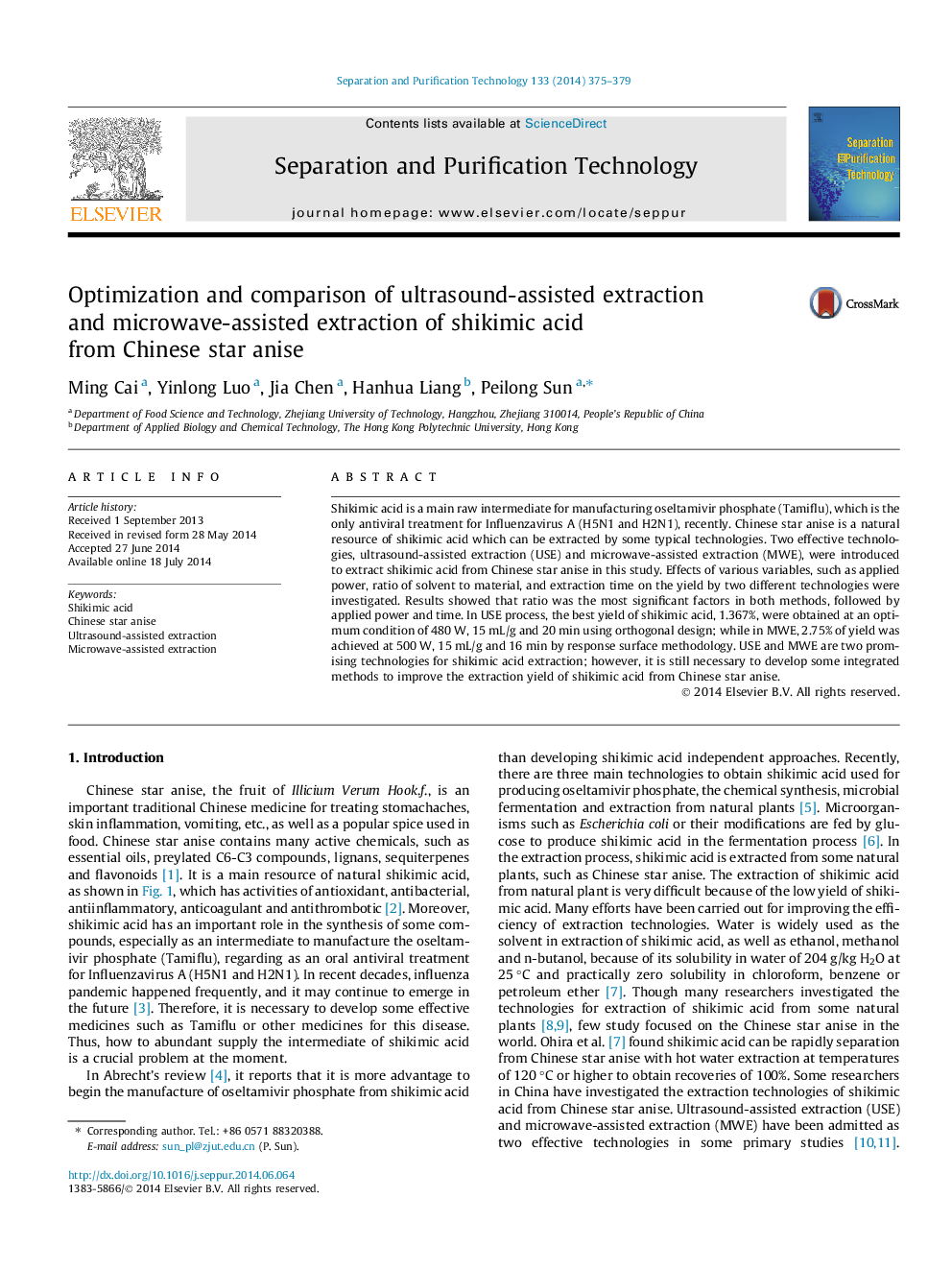| Article ID | Journal | Published Year | Pages | File Type |
|---|---|---|---|---|
| 640932 | Separation and Purification Technology | 2014 | 5 Pages |
•USE and MWE were introduced to extract shikimic acid from Chinese star anise.•Ratio was the most significant factors in two methods, followed by power and time.•Yield of 1.367% in USE were obtained at 480 W, 15 mL g−1 and 20 min by orthogonal.•2.75% was achieved in MWE at 500 W, 15 mL g−1 and 16 min by RSM.•USE and MWE are two promising technologies for shikimic acid extraction.
Shikimic acid is a main raw intermediate for manufacturing oseltamivir phosphate (Tamiflu), which is the only antiviral treatment for Influenzavirus A (H5N1 and H2N1), recently. Chinese star anise is a natural resource of shikimic acid which can be extracted by some typical technologies. Two effective technologies, ultrasound-assisted extraction (USE) and microwave-assisted extraction (MWE), were introduced to extract shikimic acid from Chinese star anise in this study. Effects of various variables, such as applied power, ratio of solvent to material, and extraction time on the yield by two different technologies were investigated. Results showed that ratio was the most significant factors in both methods, followed by applied power and time. In USE process, the best yield of shikimic acid, 1.367%, were obtained at an optimum condition of 480 W, 15 mL/g and 20 min using orthogonal design; while in MWE, 2.75% of yield was achieved at 500 W, 15 mL/g and 16 min by response surface methodology. USE and MWE are two promising technologies for shikimic acid extraction; however, it is still necessary to develop some integrated methods to improve the extraction yield of shikimic acid from Chinese star anise.
